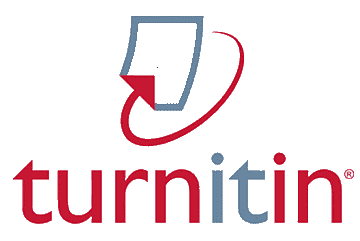Suplementasi Ekstrak Asam Kandis (Garcinia xanthochymus) dalam Air Minum terhadap Kadar Malondialdehid Kuning Telur dan Komposisi Kimia Daging dan Telur Puyuh
Supplementation of Garcinia xanthochymus Extract on Water to Malondialdehid Content of Egg Yolk and Chemical Composition of Quail Meat and Eggs
Abstract
The purpose of this study was to evaluate the effect of supplementation of Garcinia xanthochymus extract in drinking water on the quail meat and eggs quality (fat content, protein content) and malondialdehyde (MDA) on egg yolk. This study used female quails (132 tails) aged 42 days, which were kept for 6 weeks, and then divided into four groups treatments of drinking water, and 3 replications each treatment. The method used was a Completely Randomized Design (RAL) with P0 (control), P1 (pH 4), P2 (pH 3), P3 (pH 2). The variables observed were moisture content, crude fat content and crude protein content in quail meat and eggs but MDA only on yolk eggs. The results showed a significantly decreased (p<0.05) effect of Garcinia xanthochymus extract supplementation in drinking water on MDA levels of yolk quail eggs. However it had no significant effect on moisture content, crude fat content, and crude protein content in yolk quail eggs . The treatments had significantly increased crude protein in meat. It was concluded that giving extract of Garcinia Xanthochymus extract (kandis acid) at pH 2 in drinking water decreased the MDA content of quail egg yolks.
Key words: antioxidant, Garcinia Xanthochymus, chemical compound of meat and egg, egg yolk MDA
Downloads
References
Duenas M, Manzano SO, Paramas AG, & Buelga SC. 2009. Antioxidant evaluation of o-methylated metabolites of catechins, epicatechin, and quersetin. Journal of Pharmaceutical and Biomedical Analysis. 51(2):443-449. DOI:10.1016/j.jpba.2009.04.007
Emma WMSM, Sjofjan O, Widodo E & Achmanu. 2013. Karakteristik usus halus ayam pedaging yang diberikan asam jeruk nipis dalam pakan. Jurnal Veteriner. 14(1):105-110
Gaffney M, O’ RR, Taylor PJ & Murphy R. 2015. A comparative assessment of the fatty acid profiles and antioxidant status of supermarket eggs. Journal of Applied Animal Nutrition. 1(5):112-115. DOI:10.1017/jan.2015.7
Genchev A, Mihaylova G, Ribarski S, Pavlov A & Kabakchiev M. 2008. Meat quality and composition in japanese quails. Trakia Journal of Sciences. 6(4):72-82.
Hasbullah I, Wulandari Z & Suci DM. 2018. Suplemen jus daun Afrika (Vernonia amygdalina) dalam air minum terhadap komposisi kimia dan kadar Malondialdehid telur puyuh (Coturnix coturnix japonica). Jurnal Ilmu Nutrisi dan Teknologi Pakan, 18 (2): 11-18
Hassan, NKNC, Taher,M & Susanti D. 2018. Phytochemical constituents and pharmacological properties of Garcinia xanthochymus- Review Biomedicine & Pharmacotherapy 106: 1378 – 1389
Hemshekhar, M, Sunitha K, Santhosh MS, Devaraja S, Kemparaju K, Vishwanath BS, Niranjana SR & Girish KS. 2011. An overview on genus garcinia: phytochemical and therapeutical aspects. Phytochemistry Reviews. 10: 325-351
Heyne K.1987. Tumbuhan Berguna Indonesia. Jilid III. Terjemahan, , Jakarta (ID): Badan Litbang KehutananYayasan Sarana Wana Jaya
Hidayat WA, Ardinigsih P& Jayuska A. 2018. Aktivitas antioksidan dan antibakteri fraksi etil asetat buah asam kandis (garcinia dioica blume) terenkapsulasi gelatin. Jurnal Kimia Khatulistiwa. 7(2):33-40.
Huang C. 2005. Identification of an antifungal chitinase from a potential biocontrol agent, Bacillus cereus. Journal of Biochemistry and Molecular Biology. 38(1):82-88.
Jena BS, Jayaprakasha GK, Singh RP & Sakariah KK. 2002a. Chemistry and biochemistry of hydrocitric acid from garcinia. Journal of Agricultural Food Chemistry. 50 (1) :10-22.
Jena BS, Jayaprakasha GK & Sakariah KK. 2002b. Organic acid from leaves, fruit and rinds of Garcinia Cowa. Journal of Agricultural Food chemistry. 50(12):3431-3434.
Laguerre M, Lecomte J. & Villeneuve P. 2007. Evaluation of the abilty oof antioxidants to counteract lipid oxidation: existing methods, new trends and challenges. Progress in Lipid Research. 4695): 244-282
Lucida H, Ben ES & Delita E. 2012. Pengembangan kulit buah kering asam kandis sebagai herbal medicine: optimasi formulasi tablet effervesen dan uji efeknya terhadap kenaikan berat badan dan pola makan tikus. Jurnal Sains dan Teknologi Farmasi. 17(2):126-136.
Raji AO, Girgiri AY, Alade K, & Jaure SA. 2015.Characteristics and proximate composition of japanese quail (coturnix japonica) carcass in a semi arid area of Nigeria.Trakia Journal of Science. 2:159-165.
Sahin N, Akdemir F, Orhan C, Kucuk O, Hayirli A & Sahin K. 2008. Lycopene-enriched quail egg as functional food for humans. Food Research International. 41(3):295-300.
Singh,RP, Murthy KNC,Jayaprakasha GK. 2002. Studies on the antioksidant activity of pomegranate (Punica grantum) peel and seed extracts using in vitro models. Journal of Agricultural and Food Chemical, 50 (1): 81-86
Song, KT, Chei SH & Oh HR. 2000. A Comparison of egg Quality of pheasant, chukar, quail and guinea fowl. Asian-Australasian Journal of Animal Science 13(7): 986-990
Sudarmadji S, Haryono SB & Suhardi.2007. Analisis Bahan Makanan dan Pertanian. Yogyakarta (ID): Liberty
Tolik D. Poawska E, Charuta A, Nowazewski S & Cooper R. 2014. Characteristics of egg parts, chemical composition and nutritive value of Japanese quail eggs-a Review. Folia Biologica (Krakow) 62(4): 287-292
Tursiman, Ardiningsih P, & Nofiani R. 2012. Total fenol fraksi etil asetat dari buah asam kandis (Garcinia Diocia Blume). Jurnal Kimia Khatulistiwa. 1:45-48
Valko M, Rhodes CJ, Moncola J, Izakovic M & Mazur M. 2006. Free radicals, metals and antioxidants in oxidative stress-induced cancer. Chemico-Biological Interactions. 160(1): 1-40
Copyright (c) 2021 W U Cahyani, A Darmawan, D M Suci

This work is licensed under a Creative Commons Attribution 4.0 International License.
The authors of the submitted manuscript have to understand and agree that the copyrights published are held by Jurnal Ilmu Nutrisi dan Teknologi Pakan. Copyrights includes rights in reproducing, distributing and selling every section of articles in all forms and media. The copyright transfer form is signed by the corresponding author. The author”
• Creative Commons Attribution (CC BY)
you are allowed to:
Share – copy and redistribute the material in any medium or format
Adapt – remix, transform, and build upon the material
for any purpose, even commercially.
The licensor cannot revoke these freedoms as long as you follow the license terms.
Jurnal Ilmu Nutrisi dan Teknologi Pakan (Nutrition and Feed Technology Journal)

This work is licensed under a Creative Commons Attribution 4.0 International License.












